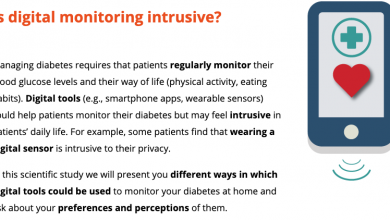You check the weather forecast…now check your health forecast
In almost all cases, the onset Type 2 diabetes is not sudden; the early warning signs of Type 2 Diabetes are clear if you look for them

Risk Factors
There are many factors that are known to increase the risk for T2D. You can consider these risk factors clouds. The more clouds you have, the more likely a storm is brewing.
These risk factors include:
- Genetics (others in your family have been diagnosed with T2D)
- Leading a sedentary lifestyle
- Aging
- Being overweight or obese
- Having high blood pressure
- Having had gestational diabetes
- Being of certain racial or ethnic groups: African American, Hispanic/Latino American, American Indian, or Alaska Native
- Having pre-diabetes
- Having polycystic ovarian syndrome (PCOS)
Men with undiagnosed T2D
Did you know that men are more likely than women to have undiagnosed T2D because they are less likely to see their doctor regularly?
The good news is, it’s not hard to diagnose T2D. A quick trip to the lab, your doctor’s office or even a free health fair can get you the information you need.
The most common way to diagnose is with an A1C measurement (a test that shows your average blood sugar over the past 3 months) or a ‘fasting glucose’ test. If you have symptoms, your doctor may not require a second test to confirm the diagnosis.
Hallmark Symptoms of T2D
It’s not rocket science to identify the hallmark symptoms of T2D.
If you have multiple risk factors along with symptoms, you should see your doctor or make a trip to your local clinic to get tested for diabetes. Some of the classic symptoms include:
- Increased thirst
- Increased urination
- Blurry vision
- Fatigue
- Patches of dark skin around the neck, armpits and/or groin area
- Slow healing of wounds
- Excessive hunger
Some people will also experience weight loss, yeast infections, and numbness or tingling in their extremities.
Certain events can trigger a worsening of blood sugar control and may make the symptoms more noticeable, such as steroid use (like Prednisone or Cortisone) or binges on sweets, sugary beverages or high carbohydrate foods.
When a diagnosis doesn’t seem quite right
Occasionally, type 1 diabetes (T1D) is misdiagnosed as type 2 diabetes (T2D). Here are some factors to consider that should prompt additional questioning with your healthcare provider and possibly additional testing to rule out T1D.
- The onset is sudden – you have annual check-ups and your blood sugar has always been good. Out of the blue, you now have an A1C that is above 10%
- You have a family history of T1D
- You are a healthy, active, normal weight individual who has no risk factors for T2D
- You have a hospitalization for diabetic ketoacidosis (DKA)
- You regularly see your doctor and find out you have diabetes (meaning you have not had undiagnosed diabetes for multiple years). You have started taking oral diabetes medications and they are not working. You have to quickly progress to insulin to get your blood sugars under control.
Put a prevention program in place
Early diagnosis and treatment are the BEST things you can do to get off on the right foot for managing type 2 diabetes (T2D) because it is a progressive disease.
Those who are diagnosed early and take care to have excellent blood sugar control often end up with few to no complications from this disease.
Educating yourself on dietary, exercise, lifestyle and medication treatment options is paramount. Any program to help you lose weight will likely lower your risk for developing diabetes. If you already have diabetes and are overweight or obese, weight loss can help improve your blood sugars, and likely reduce the amount of medication you take for diabetes.
Bariatric surgery has been shown to improve and even reverse T2D! Here is an article with details about bariatric surgery.
You can consider joining a Diabetes Prevention Program to help you get your lifestyle on track to preventing diabetes and improving your habits if you already have diabetes.




